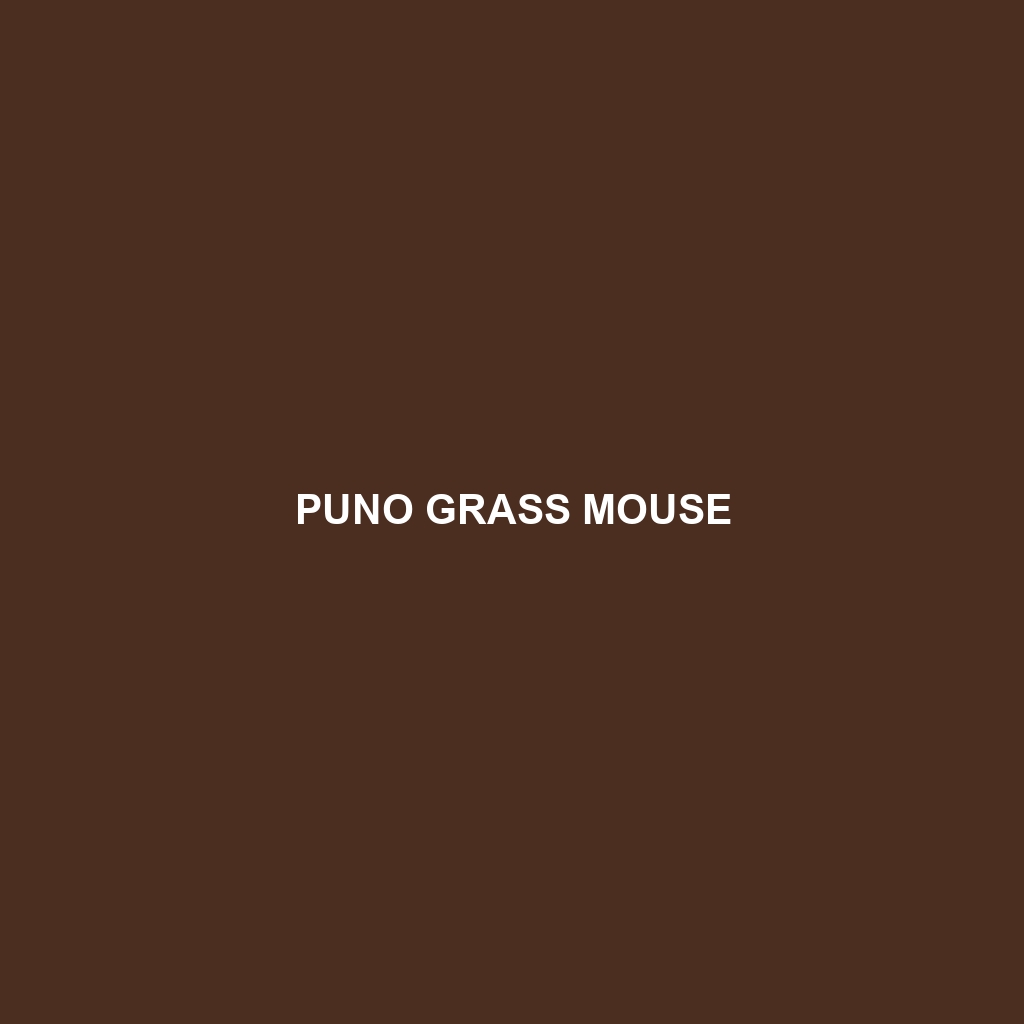Puno Grass Mouse
Common Name: Puno Grass Mouse
Scientific Name: Akodon pseudogularis
Habitat
The Puno Grass Mouse is primarily found in the high-altitude grasslands and wetlands of the Andean region, specifically in southern Peru. They thrive in environments characterized by dense grasses and tussocks, often at elevations ranging from 3,500 to 4,500 meters above sea level. These habitats provide ample cover and foraging opportunities, playing a critical role in their survival.
Physical Characteristics
Puno Grass Mice are medium-sized rodents, measuring approximately 12-15 cm in body length, with a tail that can be as long as the body itself. Their fur is soft and dense, typically exhibiting a color palette of grayish-brown on the dorsal side with a lighter, cream-colored belly. Distinctive features include large eyes and relatively long whiskers, which aid in navigation during low light conditions typical of their high-altitude habitats.
Behavior
Puno Grass Mice are primarily nocturnal, engaging in most of their activities during the night. They are known for their burrowing behavior, creating complex tunnel systems that provide protection from predators and harsh weather conditions. These mice are also social creatures, often found in small family groups, which contributes to their cooperative foraging and defense strategies.
Diet
The diet of the Puno Grass Mouse consists mainly of seeds, grasses, and other vegetation found in their natural habitat. Their robust incisors allow them to efficiently gnaw through tough plant materials. They are known to cache food within their burrows for later consumption, exhibiting resourceful feeding habits that help them survive in challenging conditions.
Reproduction
Puno Grass Mice typically breed during the warmer months, with peaks in breeding activity observed between October and February. After a gestation period of about 28 days, females give birth to litters of 3-6 pups. The young are born blind and hairless but quickly develop fur and open their eyes within a few weeks, becoming increasingly independent as they mature.
Conservation Status
Currently, the Puno Grass Mouse is classified as ‘vulnerable’ due to habitat loss and fragmentation caused by agricultural expansion and climate change. Conservation efforts are crucial to preserving their natural habitat and ensuring their ongoing survival.
Interesting Facts
One fascinating fact about the Puno Grass Mouse is its ability to survive in extremely cold temperatures, thanks to its thick fur and behavioral adaptations that include burrowing deep into the ground for insulation. Additionally, they play a vital role in seed dispersal within their ecosystem, aiding in the regeneration of plant species.
Role in Ecosystem
The Puno Grass Mouse serves as an essential component of the Andean grassland ecosystem. As a herbivore, it contributes to plant population control and dispersal. Moreover, it serves as a prey species for various predators, including birds of prey and small carnivores, thus maintaining the ecological balance within its habitat.
